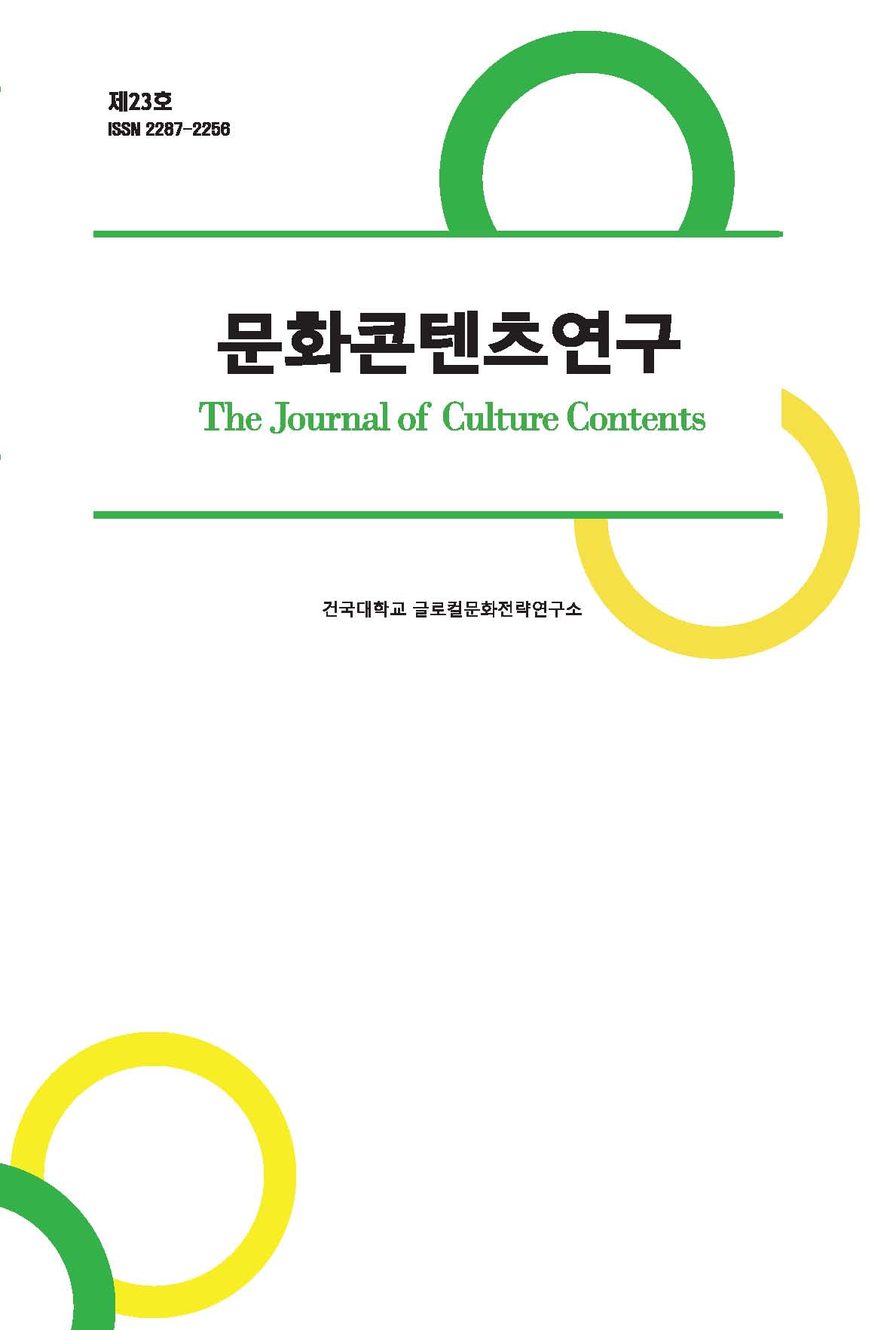Research Article
Abstract
References
Information
A new wave, which breaks the traditional way of presenting exhibitions, had been emerged since 1990. According to Jens Hoffmann, these trends have started to become popular from the early 1990s in coincides with the collapse of communism, globalisation, and rapid growth of digital media. Nicolas Bourriaud recognised this phenomenon of transitions as a multi- cultural era after post-modernism of which, he argued that heterochrony appeared due to the co-existence of different times, and more freedom in travel and translation made alternative alter-modernism appeared from Non-Western countries.
The direction of exhibition planning had been dramatically changed since 1990s. In terms of the space, the use of the exhibition space had been shifted from inside (e.g., White Cube) to the outside, and in terms of the subject, the boundaries between and curators had started to become more ambiguous. Also, artists started to deal with various themes and subjects that had never been dealt in the past.
The objective of this paper is to observe the noticeable changes in exhibition trends that have appeared since the 1990s and to analyse looking through examples of various exhibitions and the characteristic from Nicolas Bourriaud’s Alter-Modernism perspectives. Moreover, this paper aims to contribute to predicting the rapid changes in the management of museums and art galleries by tracing back from the changes of interests in artworks from the operation and their collection.
Amongst the many influential exhibitions since the 1990s, this paper particularly focused on analysing four exhibitions that clearly showed the transition of the characteristics and seek to understand implications from Nicolas Bourriaud’s Alter-Modernism perspectives. These are the examples of exhibitions that were presented in this paper.; by Harald Szeemann, Do it (1993-)> by Hans Ulrich Obrist, that was curated by Damien Hitst, and, by Fred Wilson.
전통적 전시 개념은 1990년을 기점으로 새로운 경향이 나타나기 시작했다. 옌스 호프만(Jens Hoffmann)은 전시기획의 관점이 이전과 달리 새롭고 다양해진 것이 1990년대 초부터 이며, 이러한 변화는 공산주의의 붕괴와 국제화 그리고 디지털 미디어의 폭발적인 증가에서 비롯된다고 말한다.
니꼴라 부리오(Nicolas Bourriaud)는 이 전환의 시기를 포스트모더니즘 이후의 다문화주의 시대로 파악한다. 부리오는 서로 다른 시간들의 만남으로 인해 이시성(heterochrony)이 나타나고, 탐험의 자유와 번역이 흔하게 일어나며 서구권에 의해서가 아닌 비서구권의 위치에서 나타나는 대안적 모더니즘인 얼터모더니즘(altermodern)이 나타난다고 주장한다.
1990년대부터 전시기획의 방향은 극적으로 전환하게 된다. 공간적 측면에서 닫힌 공간(White Cube)에서 열린공간(Open Sites)으로, 전시기획 주체의 측면에서 창작자(artist)와 기획자(curator)의 경계가 사라지고, 전시기획 내용 측면에서 이전 시대에서 볼 수 없었던 다양한 관심사가 다루어진다.
이에 본 논문은 1990년대부터 뚜렷이 변화된 양상을 보여주는 전시 현상을 살펴보고 니꼴라 부리오의 얼터모더니즘(altermodern)의 관점에서의 전시 사례와 특징을 분석하고자 한다. 또한 박물관, 미술관의 소장품 관리와 전시 운영방식의 전환을 미술작품에 대한 관점의 변화에서부터 추적하여 급변하는 미술관, 박물관의 경영방식을 예측하는데 이 논문이 도움이 될 수 있다.
전시분석 대상은 1990년대 이후 여러 영향력 있는 전시 중에서 특히 전환의 특징을 선명하게 보인 4가지 전시 사례를 표본으로 분석하고, 부리오의 얼터모더니즘 관점에서 그 함의를 이해하고자 한다. 전시의 전환 특징을 선명하게 보여주는 전시는 다음과 같다.: 하랄트 제만(Harald Szeemann)의<머리로 사는 방식: 태도가 형식이 될 때 : 작업-개념-과정-상황-정보 (Live in Your Head. When Attitudes Become Form: Works-Concepts-Processes-Situations-Information 1969년) >, 한스 울리히 오브리스트(Hans Ulrich Obrist)의 , 데미안 허스트(Damien Hirst)가 중심이 되어 기획한 <프리즈(Freeze)1988년>, 그리고 프레드 윌슨(Fred Wilson)의 <마이닝 더 뮤지엄( Mining the Museum)1993년>
- 김경욱, 『문화정책과 재원조성』, 논형, 2011.
- Hans Ulrich Obrist, (A Brief History of Curating), 송미숙, 『큐레이팅의 역사』, 미진사, 2013.
- Hans Ulrich Obrist, Asad Raza, (Ways of Curating), 양지윤, 『한스 울리히 오브리스트의 큐레이터 되기』, 아트북프레스, 2020.
- Nicolas Bourriaud, (The Radicant), 박정애, 『래디컨트』, 미진사, 2013.
- Brooks Adams,
Sensation: Young British Artists from the Saatchi Collection , Thames&Hudson, 1997. - Bruce Altshuler,
Biennials and Beyond-Exhibitions that made art history: 1962-2002 , Phaidon, 2013. - Bruce Altshuler,
Salon to Biennial-Exhibitions That Made Art History, Volume 1:1863-1959 , Phaidon, 2008. - Colin Davies, Monika Parrinder,
Limited Language: rewriting design: responding to a feedback culture , Birkh@auser Verlag, 2010. 10.1007/978-3-0346-0460-4 - Hans Ulrich Obrist, Independent Curator International,
do it: the compendium , Independent Curator International, 2013. - Jens Hoffmann, Show Time, Thames&Hudson, 2017.
- Lisa G. Corrin, ed.,
Mining the Museum: An installation by Fred Wilson , The Contemporary, Baltimore, and The New Press, 1994. - Nicolas Bourriaud,
Altermodern: Tate Triennial , Tate Publishing, 2009. - Nicolas Bourriaud,
Relational Aesthetics , Les Press du réel, 2002. - Paul O'Neill,
The culture of curating and the curating of culture(s) , The MIT Press, 2012. - Afterall, https://www.afterall.org/article/op-losse-schroeven-and-when-attitudes-become-form-1969-christian-rattemeyer
- Artforum, https://www.artforum.com/news/nicolas-bourriaud-ousted-as-director-of-montpellier-contemporain-85365
- ARTnews, https://www.artnews.com/art-news/news/nicolas-bourriaud-curate-2019-istanbul-biennial-10295/
- Do It at e-flux, http://projects.e-flux.com/do_it/itinerary/itinerary.html
- do it (australia) catalogue, https://doit.kaldorartprojects.org.au/catalogue#cover
- e-flux, https://www.e-flux.com/announcements/34646/search-for-the-do-it-archive/
- Tate, https://www.tate.org.uk/altermodern/explore.shtm
- The New York Times, https://www.nytimes.com/2020/03/03/style/curate-buzzword.html
- Palais de Tokyo, https://www.palaisdetokyo.com/en/content/siteits-history
- Publisher :Research Institute of Creative Contents
- Publisher(Ko) :글로컬문화전략연구소
- Journal Title :The Journal of Culture Contents
- Journal Title(Ko) :문화콘텐츠연구
- Volume : 22
- No :0
- Pages :189-217
- DOI :https://doi.org/10.34227/tjocc.2021..22.189



 The Journal of Culture Contents
The Journal of Culture Contents





